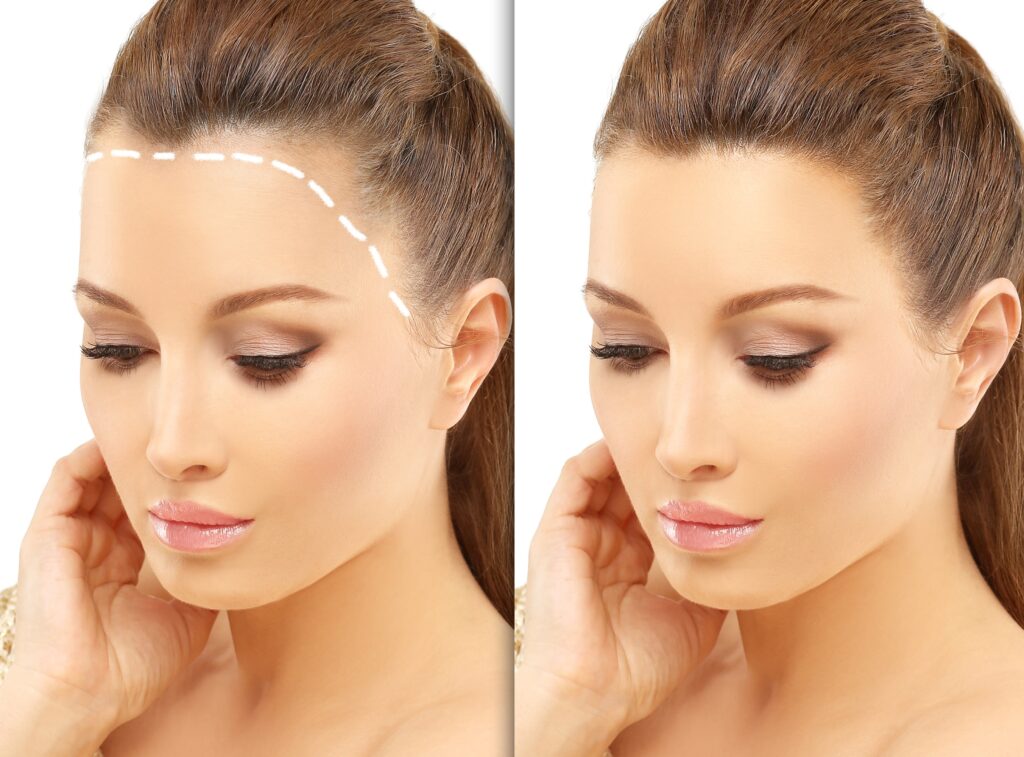Hair loss can have a significant impact on one’s self-confidence and well-being. Traditional hair restoration techniques usually provide excellent results for many people.
But, sometimes, people need to be more suitable candidates for conventional hair transplants. Artificial hair transplants can be a fantastic option for them. This procedure offers a fuller appearance without the need for donor hair. Yet, there are potential risks and advantages associated with synthetic fiber transplants.
This comprehensive guide will explore what an artificial hair transplant entails, its advantages and disadvantages, and how it compares to traditional hair restoration techniques.
What Is an Artificial Hair Transplant?
An artificial hair transplant is also known as a synthetic hair transplant. It implants foreign materials into your scalp to emulate natural hair growth. Artificial hair fibers resemble the texture and color of your natural hair follicles. These synthetic fibers consist of nylon, polypropylene, or other synthetic alternatives.
Sometimes, people cannot undergo natural hair transplants. It may be due to insufficient donor hair or other medical considerations. For them, artificial hair restoration treatment can be a great alternative.
What Is the Procedure for an Artificial Hair Transplant?

Synthetic hair transplants usually involve the following steps:
Identification of donor areas
An artificial hair transplant starts with the surgeon identifying donor areas. The surgeon then transplants synthetic hair to these specific areas on the scalp.
Anesthesia
Artificial hair restoration surgery uses local anaesthesia. It helps decrease any pain or discomfort associated with the procedure. The duration of the treatment usually depends on the extent of the area and the implanted fibers.
Incisions
After identification, the surgeon makes small incisions in these designated spots. They use specialized tools to ensure the optimal placement of synthetic hairs.
Synthetic Fiber Insertion
The surgeon inserts synthetic fibers into these incisions one by one, using a forceps or a unique implanter pen.
Artificial hair transplants can provide an instant look of fuller, denser hair. But, the synthetic fibers cannot grow and fall like natural hair follicles.
Who Is Eligible for an Artificial Hair Transplant?
Only some people are suitable candidates for synthetic hair transplants. There are specific criteria and considerations to keep in mind for your eligibility. Individuals who may be suitable candidates for an artificial hair transplant include:
Significant hair loss
Artificial transplants cannot create hair follicles, only the look of it. When there are extensive areas of baldness, hair transplantation is problematic. In that case, synthetic fibers may be your best option.
Limited Donor hair
Traditional hair transplants are dependent on the availability of healthy donor hair. If there is insufficient donor hair, transplantation is not possible.
Immediate Results
Natural hair transplants need time for the transplanted follicles to grow and establish. On the other hand, artificial fibers can offer an almost immediate result for the patient.
Medical Conditions
Specific individuals may not be suitable candidates for natural hair transplants. Some medical conditions can be contraindications for hair transplants. For them, synthetic fiber transplants can be very effective.
What are the Advantages and Disadvantages of Artificial Hair Transplants?

Every medical procedure has its own set of benefits and drawbacks. It’s crucial to weigh the pros and cons before making a decision.
Advantages of Artificial Hair Transplants
- Immediate Results: Traditional hair follicles can take several months to grow and establish properly. Artificial fibers can give you an instantaneous result.
- No Donor Hair Required: Artificial fiber transplants eliminate the need for donor hair, so people with limited hair can easily undergo this procedure.
- Relatively Non-Invasive: Artificial transplants are less invasive than traditional transplants. Rather than extensive surgery, this method makes small incisions on the scalp.
Disadvantages of Artificial Hair Transplants
- Unnatural Appearance and Feel: Synthetic fibers usually do not look or feel like natural hair. They appear unnatural in texture and movement.
- Limited Lifespan: Artificial transplant is not a permanent procedure. You may need to replace your synthetic fibers occasionally as they have a limited lifespan.
- Body Tolerance: Some people are allergic to synthetic fibers. Conducting a tolerance test is crucial to avoid transplantation complications.
What are the Risks and Side Effects of an Artificial Hair Transplant?
Artificial hair transplants promise an easy way to gain more hair. Yet, we should also consider the potential risks and side effects:
- Infection: The introduction of foreign materials into the scalp leads to infections. Proper sterilization and aftercare are mandatory to avoid diseases or inflammation.
- Scarring: The incisions made during the procedure may result in scarring. It can sometimes lead to permanent hair loss or scarring alopecia.
- Rejection: The body’s immune system sometimes rejects synthetic fibers. This complication may lead to itching, inflammation, or the need for removal.
Real Hair Transplant vs. Artificial Hair Transplant
The differences between real hair transplants and artificial ones may include:
Natural Hair Transplants:
- Transplant of own hair follicles into thinning or balding areas.
- It needs enough donor hair and healthy hair follicles.
- Permanent, natural-looking hair growth.
- Longer recovery time.
- There is a gradual appearance of new hair over several months.
Artificial Hair Transplants:
- Synthetic fiber implantation into the scalp.
- An immediate result of thicker and fuller hair.
- It only mimics the appearance of natural hair.
- It looks unnatural.
- There is a risk of infection, rejection, and potential scarring.
- The transplant requires periodic maintenance or replacement of synthetic fibers.
It is crucial to consult with a qualified and experienced surgeon before deciding on an artificial transplant. They can accurately evaluate your medical history, hair loss pattern and scalp condition.
Cosmedica Clinic, Specialists of Natural Hair Transplant in Turkey

If you’re considering a natural hair transplant, Cosmedica provides personalized consultations and comprehensive guidance.
Cosmedica is a leading hair transplant clinic in Istanbul, Turkey. We prioritize innovative and effective hair restoration solutions. One of our cutting-edge techniques is known as the DHI Sapphire method.
With over 20,000 satisfied customers and a remarkable 98% growth rate, we take pride in delivering exceptional results. Headed by Dr. Levent Acar, our clinic offers cutting-edge techniques tailored to individual needs.
To learn more about our services, including detailed pricing information, browse our extensive before-and-after gallery, or dive deeper into the DHI hair transplant method, visit our website.
